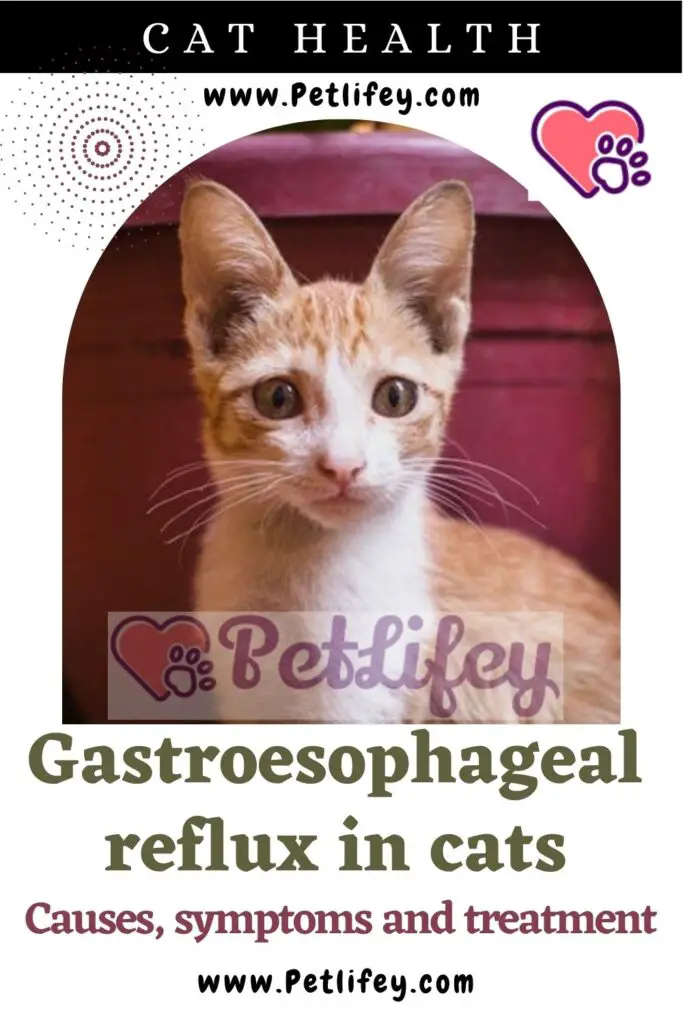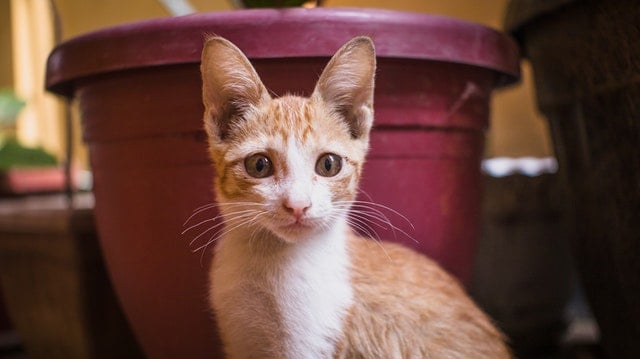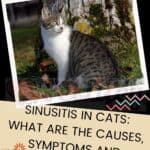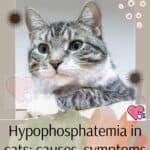
Cats can suffer from gastroesophageal reflux, also known as acid reflux disease, but what are the causes, symptoms and treatment of this problem.
Vomiting in cats and subsequent reflux, unlike dog reflux, is usually attributed to “cat hairballs” or “his way of eating too fast” suggesting that this is normal feline behavior.
But for some cats, reflux is the normal daily routine. Gastroesophageal reflux or GERD occurs when there is an uncontrolled flow of stomach or intestinal fluids into the esophagus. The esophagus is the part of the body that serves as a tube that connects the throat to the stomach.
The acid in gastrointestinal fluids, which includes stomach acid, pepsin, bile, and other components, in addition to causing vomiting, can damage the lining of the esophageal mucosa and cause inflammation, a condition called esophagitis.
Causes of gastroesophageal reflux in cats
The first step in determining the cause of your cat’s acid reflux is to determine if she is vomiting or regurgitating. Regurgitation is a passive process and is quite rare in cats. With the regurgitation of the cat, food or water will be removed spontaneously from the stomach, the food in this case is not digested and there will be no bile in the spill (yellow-spotted cat vomit).
The cat during the regurgitation and immediately afterwards should not be approached as it becomes aggressive and can bite, but before the regurgitation, you will not even notice that it is not well. Most causes of regurgitation in cats are due to esophageal motility disorders, which are rare.
In kittens, there are rare congenital abnormalities, such as hiatal hernia, which lead to chronic regurgitation and gastroesophageal reflux of stomach acid. Regurgitation is a rare condition even in older cats. Finally, another risk factor is chronic or long-lasting vomiting.
Diagnosis of gastroesophageal reflux in cats
The first step for the cat suffering from gastroesophageal reflux is not the laboratory test, but a simple change of diet. In a vomiting cat, vets often begin with experimenting with a limited diet based on new ingredients (a single source diet that combines a protein and carbohydrate fiber that the cat has never eaten before, such as deer and pea).
A diet designed in the laboratory, to break down proteins to a level that the cat’s immune system cannot recognize as an antigen . If no improvement is seen within 1-2 months , food allergy is considered a less likely cause of vomiting and further diagnosis would be needed in this case.
Plain x-rays (x-rays) and a study of barium (a radiopaque fluid that highlights the gastrointestinal tract) can help detect congenital abnormalities and foreign bodies in the cat. Ultrasound is an excellent diagnostic tool for visualizing the feline gastrointestinal tract, pancreas, and lymph nodes, but is more limited in its ability to provide a definitive diagnosis.
Samples of the feline esophagus and gastrointestinal tract can only be obtained by endoscopy and endoscopic biopsy or surgical biopsy. Both procedures require the cat to undergo general anesthesia.
Endoscopy remains the most appropriate tool, as it uses a camera that is placed in the cat’s throat up to the esophagus, then into the stomach and then into the intestine. Special forceps are used to take and obtain samples in order to proceed with the biopsy to be sent to a pathologist and thus to be able to definitively diagnose the cause of the vomiting.
Unfortunately, there are few specialized clinics that offer an endoscopic or laparoscopic biopsy, due to the cost of the equipment. Surgical biopsies of the cat’s stomach or intestines can be done by a general practitioner or veterinary surgeon. Often the operation takes place itself as part of an abdominal diagnostic exploratory surgery.
However, the veterinarian will have to balance the risk of more invasive procedures (reaction to general anesthesia, poor wound healing and infection) with the benefits of the information that can be obtained (biopsy samples to develop a specific treatment plan).
Treatment

Providing your vet with the full history, as well as specific diagnoses are the best tools to identify the cause of your cat’s vomiting or regurgitation so that you can minimize the amount of treatment needed and help your feline friend. Treatment for any cat is always a challenge, as any cat owner who has suffered from reflux will confirm.
For the cat suffering from severe reflux and esophagitis, advanced IBD, lymphoma or pancreatitis, they will be placed in a feeding tube that is temporarily placed to provide nutrition and medication. Since these cats have no appetite, they tend not to feed spontaneously.
The cat with esophagitis will benefit from esophageal and stomach protectors , such as sucralfate, a tablet that dissolves in water, administered orally and which will cover erosions of the cat’s esophagus and stomach. Famotidine is used to reduce stomach acid in cats to help heal ulcers and erosions.
Finally, it will be essential to give appetite stimulants, such as cyproheptadine or mirtazapine, to encourage the cat to eat. For chronic cat regurgitation or vomiting, metoclopramide is often prescribed to help increase intestinal motility, fight nausea, and close the lower esophageal sphincter, thereby reducing reflux and vomiting.






